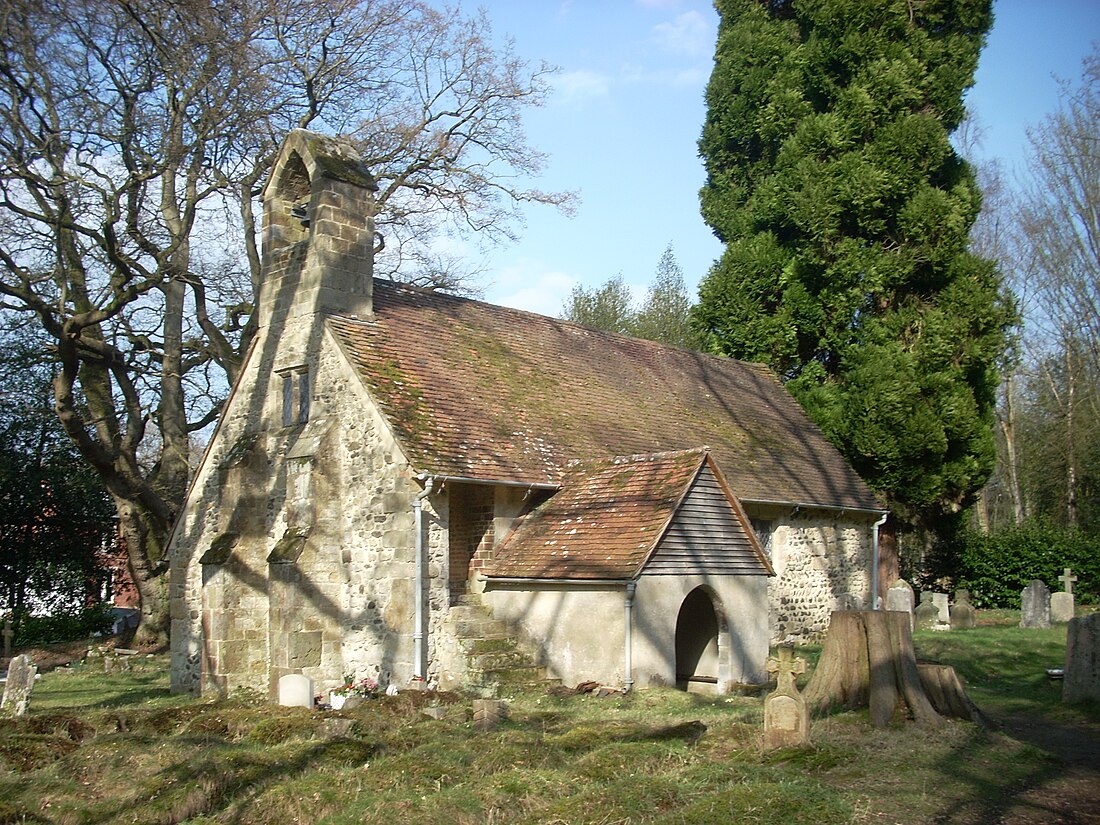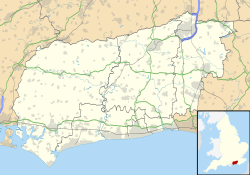Top Qs
Timeline
Chat
Perspective
Tuxlith Chapel
Church in West Sussex, England From Wikipedia, the free encyclopedia
Remove ads
Tuxlith Chapel, also known as Milland Old Church, is a redundant Anglican church in the village of Milland, West Sussex, England (grid reference SU 825 282). It is recorded in the National Heritage List for England as a designated Grade II listed building,[1] and is under the care of the Friends of Friendless Churches.[2]
Remove ads
History
Summarize
Perspective
It has been stated that the church was built as a chapel of ease to St George, Trotton, in the 16th century.[3] However, there must have been an earlier building on the site because during conservation work a blocked window dating from the 12th century, and herringbone masonry in the north wall in Norman style were found.[2] The earliest surviving documentary evidence relating to the church is a bequest in a will dated 1532 to "the Church of Tyklyth".[2] The parish registers go back to 1581. In the 17th century a gallery was added, approached by steps from outside the church. During the following century a north transept was built. However, during the 19th century, due to growth of the local population, the building became too small for the size of the congregation, and a new church dedicated to St Luke was built to the west of it in 1879.[2]
The old church was used as a Sunday school until the 1930s, when it became unused and its fabric deteriorated.[2] It was listed as Grade II listed building in 1959, at which time it was described as being "disused and neglected".[1] The church was declared redundant in 1974.[2] It was one of the first churches to be owned by the charity, the Friends of Friendless Churches.[4] At that time the charity was only a pressure group, but its constitution was changed so that it could instigate repair and renovation of the churches in its possession.[4] The charity holds a 99-year lease with effect from 1 January 1974.[5] After its acquisition the building was immediately made waterproof.[2] Money has since been raised for further restoration work, helped by the Friends of Tuxlith Chapel, a group founded in 1993. It is now used as a community centre, and it hosts concerts and meetings.[4] Improvements to the furniture of the church have been undertaken, including restoration of the pulpit in 1993, and a new altar designed by Sir Hubert Bennett.[2]
Remove ads
Architecture
Tuxlith Chapel is constructed in plastered stone rubble with ashlar dressings and has a tiled roof.[3] Its plan is L-shaped, consisting of a chancel with a north transept and a north porch, and a nave with a south porch. On the south wall are stone steps which led up to the former gallery.[1] On the west gable is a bellcote.[3] On the sides of the east window are Commandment Boards containing the Creed and the Lord's Prayer.[6]
Contrasting it favourably with St Luke's Church, its 19th-century replacement, architectural historian Nikolaus Pevsner described it as making "a very telling contrast between true piety and 19th-century religious advertisement".[7]
Remove ads
See also
References
Wikiwand - on
Seamless Wikipedia browsing. On steroids.
Remove ads


